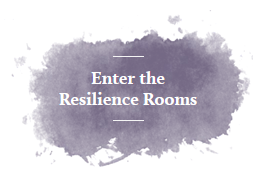These challenges impact on the ability of our children to get their academic, psychological, social, and personal needs met when they are at school and otherwise. Because children spend most of their waking hours in school, these limitations are worth assessing for remediation and reform.
The Top Limitations With The Current School System:
A lack of awareness and understanding regarding child development and the current trends affecting kids
School personnel must stay current on knowledge of child development and the social trends and prevalent challenges that affect our youth. School personnel need to have knowledge on various diagnoses that impact children’s mental health, learning and behavior (e.g., ADHD, executive functioning and sensory processing challenges, social anxiety, etc.).
The largest long-term study of brain development and childhood health is currently being conducted in the US and is looking at the effects of academic stress, the risk of substance use/abuse, screen time, etc. A recent study indicated the proportion of emergency room and hospital encounters for suicide-related diagnoses almost tripled, from 0.66 percent in 2008 to 1.82 percent in 2015. The rate of increase was highest among adolescent girls. Dr. Gregory Plemmons, the first author on the study reported, “What we find nationwide is that over the last decade, the numbers of kids being admitted or seeking help in the emergency department or hospital for suicidal ideation or attempts have dramatically increased.”
School shootings have also been more common. There have been 290 school shootings since the catastrophic massacre in Newtown, Conn., more than five years ago. Since 2013, there has been an average of one school shooting a week in the U.S. The most recent shooting in Santa Fe, TX was the 22nd school shooting so far this year.
I continue to see kids and parents in my practice that have been overlooked, misguided, misdiagnosed, and given inappropriate referrals because of a lack of awareness or knowledge regarding childhood challenges.
Labeling and shutting down children’s behaviors rather than understanding the root causes of their behaviors
Children’s behaviors aren’t in a vacuum. There are viable reasons why kids react the way they do. The reactivity is typically because of something they “want” or “want to get rid of.” Managing behavior and taking corrective action is often the first line of defense, rather than extrapolating and exploring kids’ thoughts and feelings.
For example, I worked with a child who was reported as being repeatedly “disrespectful” during a class. The parents were receiving continual calls and the child was recurrently being reprimanded for being “difficult”, “uncooperative”, and “disrespectful.” What the parents learned was that the child was being mistreated by the teacher and her behavior was in response to her anxiousness and discomfort of being in the class with that teacher.
Punitively punishing kids
Kids who exhibit negative behaviors run the risk of developing a negative self-perception and a reputation from others about their behavior. It can also lead to a self-fulfilling prophecy. Whereby, if they’re seen as a bad kid, some continue to play the part. In my experience, often schools administer punishments that often don’t “fit the crime.” Kids often walk away learning nothing new about themselves or their behavior in the process.
Most kids I have spoken to appreciate their suspension and see their time off from school as a huge relief. It’s been described to me as a gift, rather than a punishment. Even true criminals get an opportunity to be innocent until proven guilty, have a trial, and their history and character is considered in the sentencing. Whenever possible, community service should be the first option considered for kids.
I have had the personal experience whereby my child was suspended and was falsely accused of destroying school property. A school camera blatantly revealed that he didn’t commit the act he was being accused of. In my practice, I guided a patient to advocate for community service for her son after a suspension was threatened. Her child reported to her that he was delighted to have a three-day weekend and happily welcomed the time away from school. Instead, he missed his basketball practice and helped a teacher prepare for a program on personal responsibility and assertiveness, and effortfully “gave back to the community.”
School start times being too early
Later start times are warranted, especially for adolescents and teens. A study revealed that most high school students do not get sufficient sleep. Later start times resulted in a significant increase in sleep duration which also generally correspond to improved attendance, less tardiness, less falling asleep in class, better grades, and fewer motor vehicle crashes.
Insufficient sleep in adolescents has been shown to be associated with a wide variety of adverse outcomes, from poor mental and physical health to behavioral problems and lower academic grades. Another study, revealed that a later start to the day led to more sleep and better mood in teenage girls. Students’ self-reported improvement in mood. They reported less depression, less sleepiness and overall “feeling more refreshed” during the school day.
Recess time being cut down and taken away
Recess responds to a child’s social emotional needs, contributes to their cognitive and intellectual functioning, and addresses their physical needs. Recess is a time that kids can have unstructured play as an outlet for anxiety, restlessness, or lethargy. They can expand their socialization by playing with friends from other classes, get fresh air, be exposed to nature, and engage in physical activity. It’s shouldn’t be an option to take away recess for any reason because kids fundamentally need and deserve it.
Despite the need, as much as 40 percent of school districts in the United States have reduced recess in the aftermath of the No Child Left Behind act, which emphasizes testing scores. In addition, many schools, take away recess as a form of punishment for poor behavior. Just like taking away lunch isn’t a viable punishment option, taking away recess shouldn’t be one.
Kids being overworked and overwhelmed with schoolwork
The pressures of schoolwork, family life, social life, sports or other activities, combined with a relentless media culture, result in young people being more stressed than ever before. In a study conducted by the American Psychological Association (APA), Teens routinely say that their school-year stress levels are far higher than they think is healthy and their average reported stress exceeds that of adults. On average, teens reported their stress level was 5.8 on 10-point scale, compared with 5.1 for adults. The most common reported source of stress was school (83 percent).
Cumulative stress can eventually lead to unstable moods (impacting motivation, level of anger and anxiety, etc.), somatic complaints (abdominal pain, headaches, muscular pain, etc.) and disrupted sleeping and eating patterns. But despite all of this, kids are being given mounds of homework and ongoing projects, multiple exams in a given day, and homework and projects to complete during their weekends and vacations.
Social emotional learning (SEL) and value-based skills and programs being administered as a one-shot deal
Up to one in five kids living in the U.S. shows signs or symptoms of a mental health disorder in a given year. In a classroom of 25 students, five of them may be struggling with issues such as depression, anxiety, and substance abuse. There is a plethora of studies that support the need to integrate social emotional learning and mindfulness meditation in school curricula and at home because of the long-standing positive benefits.
It is also evident that teaching kids about the current issues that impact them is pertinent and necessary. In many schools there’s programming around substance abuse, bullying, social media, cultural/diversity sensitivity, safe sex practices, among other topics. These programs are most often conducted as a one-shot deal, despite what the learning theory research stipulates about the need for continual reinforcement.
Developmentally appropriate skills and programs need to be infused in the curricula from kindergarten through high school and need consistent and continual reinforcement throughout the academic school calendar.
A lack of uniformity across schools
The Board of Education in individual states establish specific guidelines regarding nutrition, physical education, academic requirements, programming, etc. There are no state requirements in private schools. Unfortunately, in schools with scarce resources, children are often deprived of critical programming and services. The inequity in schools needs strong attention and consideration.
Curricula and academic standards being geared toward the “average” child
Learning, testing, and programming tend to be geared to the average, typical child. For example, I have had patients complain that they were given exams that were predominantly essays or multiple choice which was challenging for them, that class was mainly didactic which they found themselves restless and bored in, and exams being so difficult that it always has to be curved by the teacher because the average score was below a passing grade. For children with executive functioning, learning, attentional and conduct challenges, these “average” methods are extremely limiting and counterproductive.
Schools must consider every child and the array of needs they may present with. There needs to be consideration of different learning styles, and expansive and creative ways to teach kids through tapping into their strengths and being familiar with innovative and effective learning methods. Kids should collaborate and take personal responsibility for their learning. This is known to increase motivation, accountability, and productivity. Schools should consider conducting a periodic needs assessment and have older kids evaluate administration, teachers, and programming in order to provide feedback and partner in creating reform and positive change.
Let’s open the dialogue about these factors. Change will not happen on its own. As parents we have the power to create change for our children if we work together to create that change. Let’s invest in the process together to better help our children to grow and thrive.



